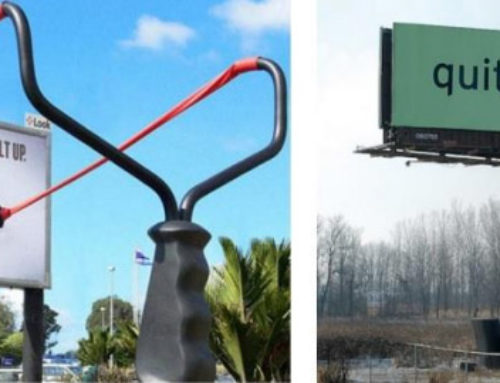The OAAA has retained identity-consulting firm, Sensory Logic, Inc. to determine how consumers respond to various visual cues in outdoor advertising. Sensory Logic was chosen because of their unique method of qualitative research called BodyTalk™, which scientifically gauges both conscious and subconscious responses.
This approach includes traditional market research interview methods but goes beyond that to further explore deeper reactions that are not expressed, better representing how consumers actually respond to what is being viewed. It does this through a combination of biofeedback measures, self-reports and facial coding to gauge reactions in “body, mind and heart”. Clients of Sensory Logic include Target, 7-Eleven, Lowe’s and
McGraw Hill to name a few.
 Goals/Parameters
Goals/Parameters
The test was designed to measure the relative effectiveness of outdoor copy characteristics for the purpose of developing guidelines for creating successful outdoor advertising.
The panel chosen represented a typically diverse sample of audiences exposed to outdoor from a geographic, demographic and ethnic standpoint:
- 20 respondents were interviewed in a New Jersey suburban mall
- 20 respondents were interviewed at Sensory Logic’s San Diego headquarters
- 50% were 13-19; 50% were 20+
- 72% of respondents were Caucasian, 9% African American, 8% Hispanic and 11% Asian American
- 11 different executions were examined, representing four product categories and a variety of copy treatments.
Measurement Factors
Two critical measures were examined for each creative reviewed:
Impact – the ability to grab a viewer’s attention and Appeal – the measure of persuasion and positive response by the viewer to the creative
Findings
Stopping power, readability, message clarity and memorability are deemed to be key attributes of successful outdoor advertising. Each of these aspects were examined within the context of impact and appeal, with results differentiated between biofeedback readings and verbal responses. By characteristic, suggested guidelines are as follows:
Keys to Stopping Power
What respondents said:
- Use strong color contrasts between fore and background elements.
- Use colors with deep saturation; avoid darker shades that “retreat” from the viewer
- Suggest a story line with dramatic tension or suspense to engage the viewer.
- Avoid either a cluttered or very austere format
- Keys to Readability
What they felt:
- Design should be cohesive with a simple, clean text
- Prioritize key words and key copy short, full of punch
- Vary font size, avoiding all capital letters
What they said:
- Picture should be big and simple
- Avoid making the viewer search for the message; make it clear immediately.
- Keys to Message Clarity
What they felt:
- Convey the idea quickly, avoiding excessive “brain teasing”
- Relate the message to familiar experiences and situations
- Emphasize the product as “hero/ helper” through large-sized depiction of the product.
- Use people with inviting body language
What they said:
- Clarity is favored over cleverness. Failure to “get” the joke creates annoyance of embarrassment… thus, know your audience!
- If humor is used, be sure it is relevant across regional, gender and ethnic variances of the target
- Create a tight connection between product benefit and relevance to the viewer’s life
Keys to Memorability
What they felt:
- Imagery is more powerful than words. Include an anchoring visual element.
- Use images that are easily recognizable and draw on essential life experiences.
- Include playful, lively elements that generate excitement.
- Ensure the viewer can relate to the person or situation depicted.
What they said:
- Make it simple, easy to remember.
- Use bright, eye-catching colors.
Observations/Conclusions
In the interviews, it was clear that outdoor offered excellent reinforcement for other visual media, notably television. In markets where a brand was running a television campaign, memorability and message retention was much higher for the outdoor advertisement.
In outdoor, the media is the message. There is no delivery device but the advertising itself, nothing to hide behind. Thus knowing what factors consumers notice and respond to is paramount in creating effective outdoor advertising. This Sensory Logic test offers a benchmark study from which to build a set of standards for outdoor advertising today.







Leave A Comment